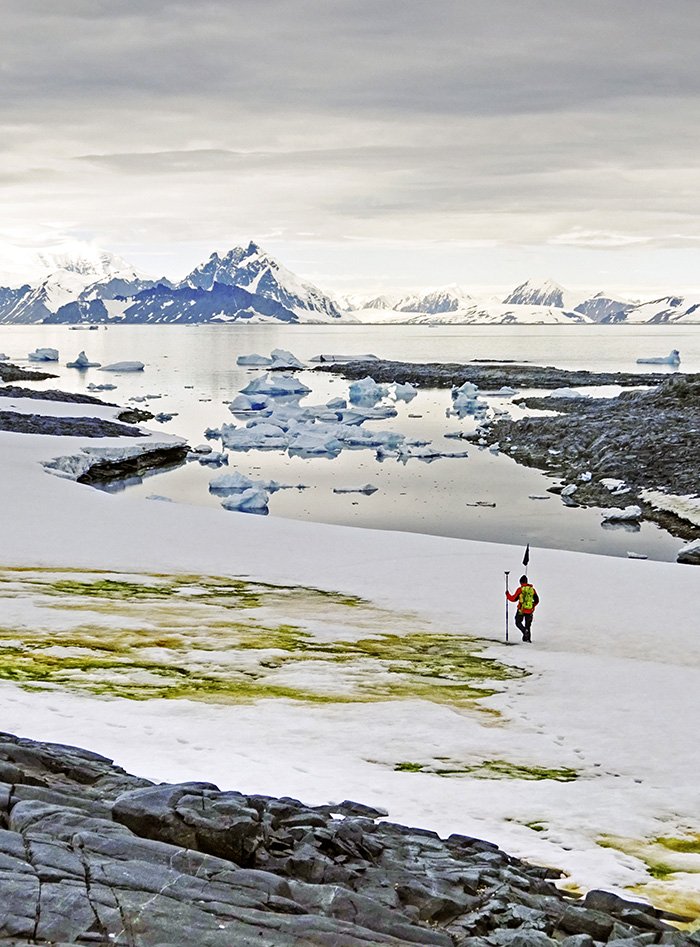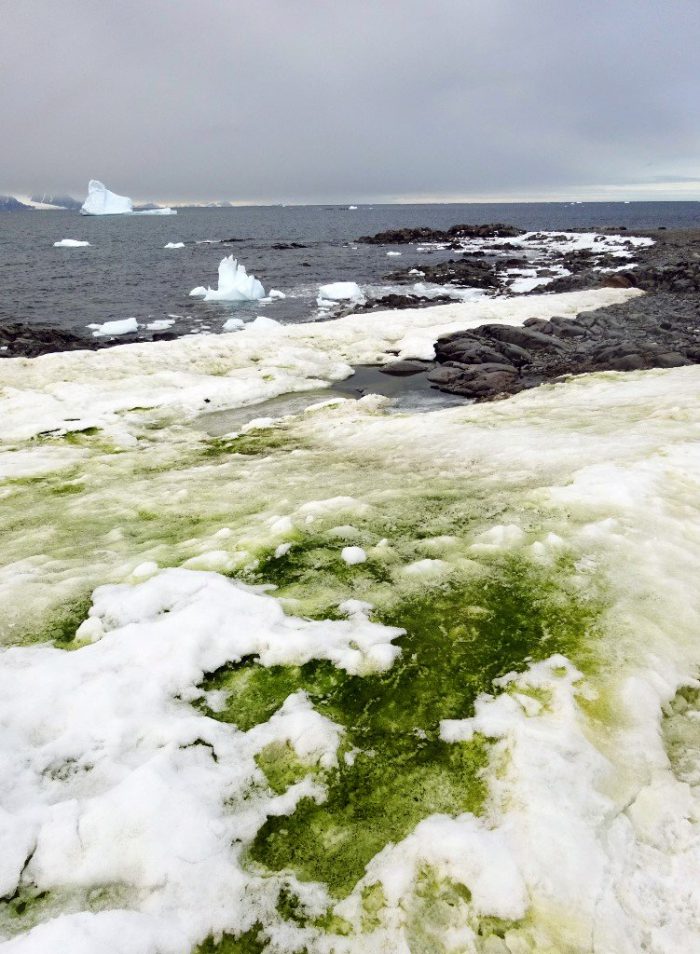In terms of variety of wildlife and plant life, Earth doesn't get more desolate than Antarctica.
It is the world's largest desert—the coldest, windiest, most isolated place on the planet. But it is not a dead continent.
It's animal life is something we know well. Penguins and other birds, seals, and a bounty of whales, krill, and fish in the waters around it. But plant life? There are no trees, no shurbs, no grasses. But...
There is green algae. And according to new studies, thanks to climate change, there may be more and more of it in the future. Which might not be a bad thing.
What is green algae?
Green algae is a microscopic form of plant life. It is rich in chlorophyll, which is what gives it its green colour and allows it to photosynthesize, or make its own food using energy from the Sun.
There are many different types of green algae out there, living in virtually every ecosystem—from oceans to swamps to forests. Green snow algae has always been a part of Antarctica, growing on patches of snow during the summer months.
Why are we talking about it now?

Researchers have been studying the growth in green algae in Antarctica for several years. (AFP PHOTO/Dr Matt Davey, University of Cambridge/SAMS)
It's true that green algae isn't new in Antarctica. But climate change raises temperatures around the globe, Antarctica is getting warmer much faster than other parts of the world. It's not tropical—still just above freezing, in fact! But warm enough to increase the amount of algae that is appearing during the summertime.
As the algae grow, or bloom, millions upon millions of these microscopic organisms come together to form colonies of green that can even be seen from space! (Though it certainly helps that everything else around it is white!) Studies also show that they often appear near penguin colonies. The birds' droppings make for terrific fertilizer, just as in other ecosystems on Earth.
A new balance?
As Antarctica slowly becomes a little warmer—and greener—a really interesting question appears. How will this affect the continent's balance in the future?
It is well known that warming temperatures due to greenhouse gases are melting polar ice. But the photosynthesis of green algae is actually a strong user of carbon dioxide, much like other plant life. This could maybe bring a new balance to the ecosystem—a greener Antarctica that warms more slowly thanks to the effect of the algae.
But as we also wrote about earlier this year, these temperatures are also bringing red algae blooms to the area, too. These darker surfaces absorb more sunlight and heat, which, yep, raises temperatures more.
In short, there's a lot more research to do. But whatever Antarctica is going to look like in the future, green algae is probably going to be a big part of it.
 A green algae bloom on Adelaide Island, Antarctica. (AFP PHOTO/Dr Matt Davey, University of Cambridge/SAMS)
A green algae bloom on Adelaide Island, Antarctica. (AFP PHOTO/Dr Matt Davey, University of Cambridge/SAMS)










First comment!
Hello I am a big fan